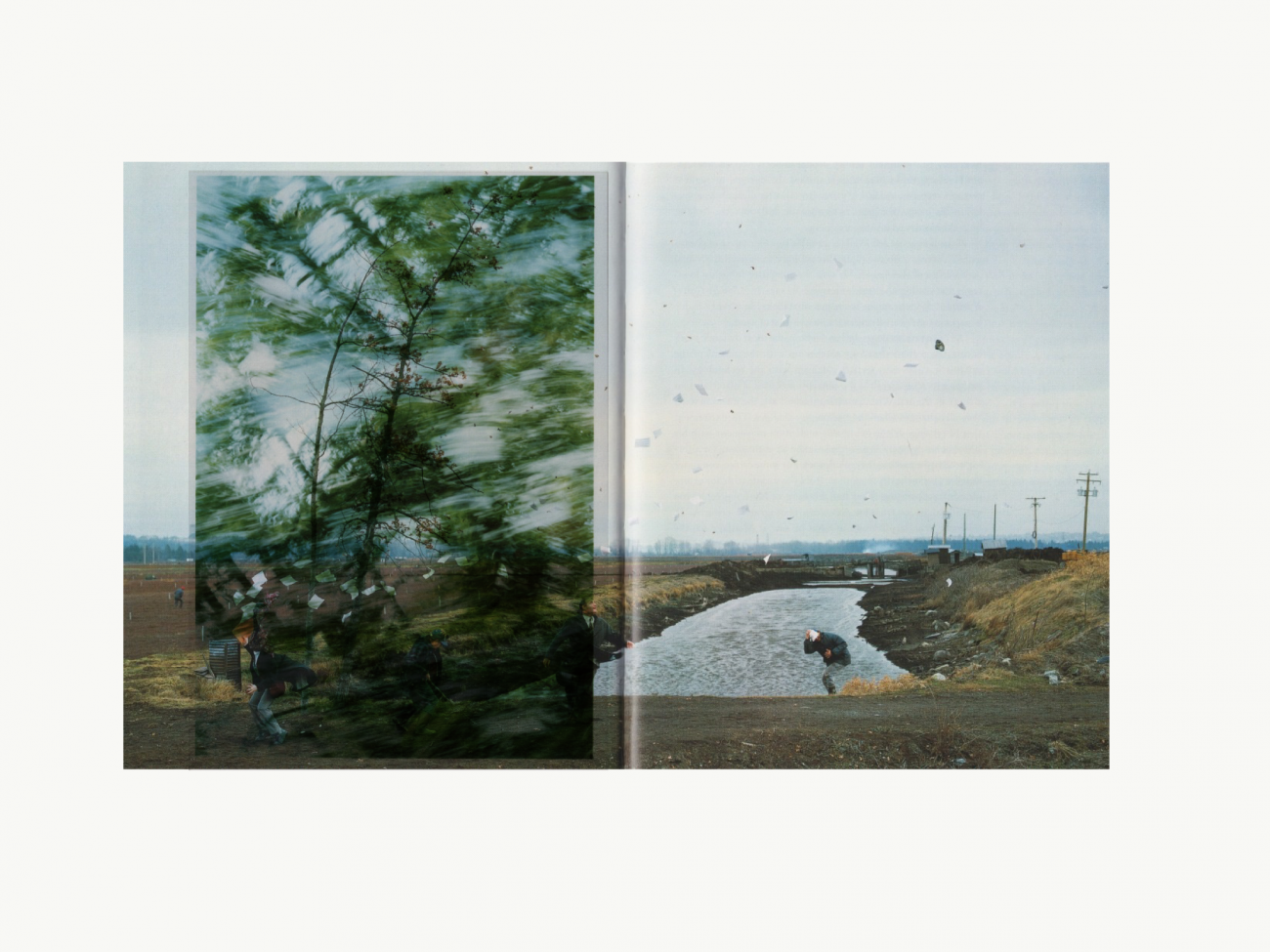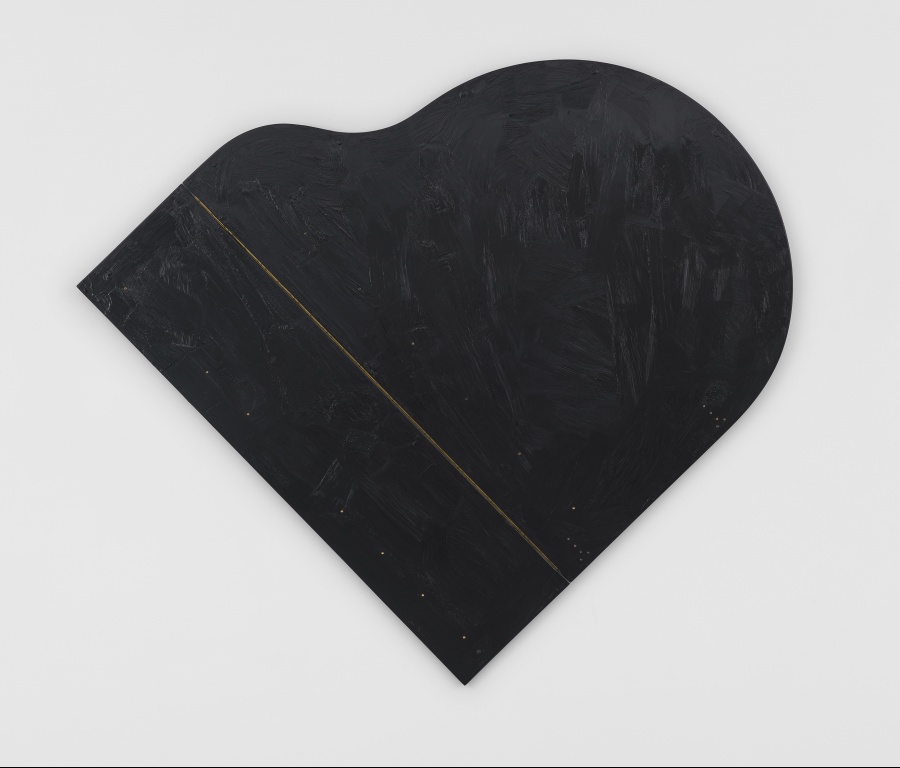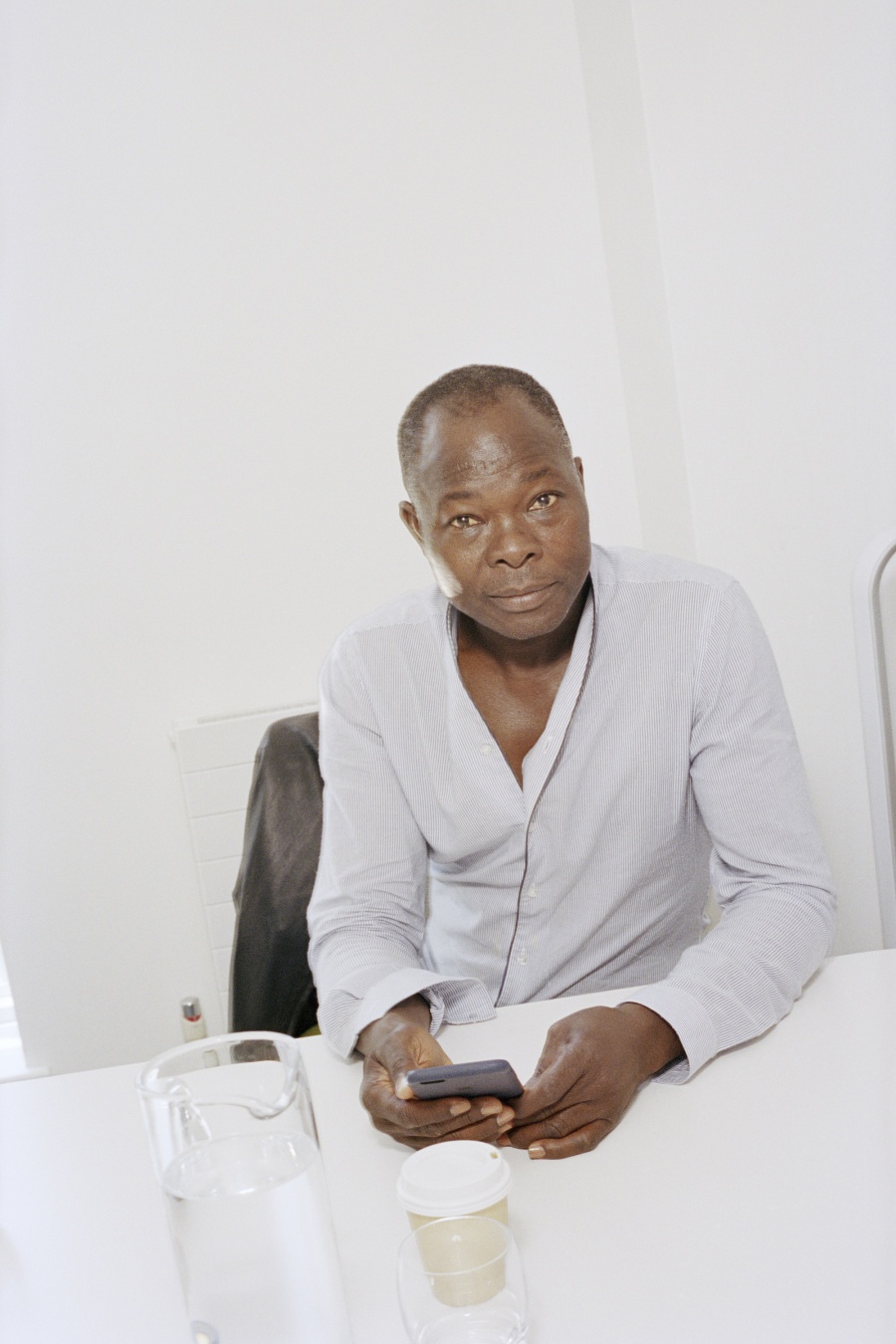Permutations of Thoughts: In Conversation with Peter Phan
California-based artist Peter Phan’s current works sit at the perimeters of photography, painting, and the found object. Constructed from a deep dive of archival data – that once meant something to their author, but whose associations have faded with the passing of time – these stitched-together prints exude a kind of trippy chaos as they play out across their quadrilateral frames in vibrant, kaleidoscopic forms. Through his collages, Phan critically examines the processes associated with photography, from the selection of equipment to the idea of capturing external life, by generating imagery through a combined process of the mirrorless camera, and the digital layering of these abstract shots.
Phan’s work is currently on show as part of New Futures Digital at Kovet.Art, online, until 20th January. Alongside Mazzy-Mae Green and Greta Voeller, curators of the show, the artist discusses working with data from life, resisting categorisation, and the forced re-looking at his hometown during this year.

All images are by Peter Phan, courtesy the artist and Kovet.Art
MG: I’d like to start by talking about the works that are in the show. How did these pieces come about?
PP: This series came from my experimentations with many different mediums. It came to be that I wanted to combine these new experiments with my pre-existing practice as a photographer. I worked for a long time, for example, with collaging found imagery; I’d find images online and seek to find certain rhythms within them, or a narrative that ran between them. Working in this way was, in many ways, about controlling what the image means, feeding it through my preconceived, subjective notion of what lies within it. I then realised that to be mirrored in objects within my own reality, outside of imagery found online. So, returning to photography in that way, shooting images of my own reality and treating them as abstract objects, made sense.
“I could tell that every single lens would render reality so differently.”

GV: There’s a sense of decomposition in that process, something that in digital photography you don’t tend to have as much. While your work in physical form is printed, it’s difficult to define it as photography. Would you still consider these pieces photographs?
PP: I tried hard to force my work into ways that people could categorise for a long time, as I wanted it to somehow fit into something, but I think I have an interest in a lot of things that make it hard for my work to be any one thing. It’s interesting to me for data not to be able to be put into any specific box at the moment. The need to put it in a box bothered me for a while, but I’ve realised that maybe what it really is is its own box that just doesn’t fit into another category. I’ve studied many different cameras, going through around 40 or 50 lenses, because I could tell that every single lens would render reality so differently. Each time you pair a different one with the sensor, or the film backing, they have a specific way of rendering within the pairing. If I use a specific lens with one digital body, and use that same one with another digital body, I get a completely different rendering of the image. Therefore, each time I use a camera, it is automatically a re-rendering within pixels, which is already a manipulation or a lie that may be close to what we may be thinking or perceiving in that photograph. The end goal is just an image in reference to what I see in front of me.

MG: That very controlled approach to the lenses sits in contrast to the chance encounter in your work. I see two critical junctures in your process: the chance encounter with something that has caught your attention, and the transference of that image into the digital environment. How do you see this playing out in your work?
PP: For that first juncture, and with my current approach, what I will receive as a final image will be exactly what I’m seeing through the viewfinder. And so at that early stage, I’m already interacting with how the image is supposed to be, rather than trying to perceive and compress reality. A few years back, mirrorless cameras were not as adjusted to working properly, the refresh rate on the screen was a little too slow, and there were a lot of quirks about the cameras that made them not very usable. They’re now on par with other cameras, and there are no hiccups with the medium itself, so when you look through a digital viewfinder, you’re seeing directly what the image will be ahead of time. If I were to take a photo on an SLR or a film camera, the final image would be different to what I would see through the viewfinder. When I pull these images into a digital programme, I do not manipulate or distort this original process, instead using this latter juncture to create a collage.
“The photographs become just a set of material paints.”

MG: There really is a sense that you’re stilling and distilling a moment through your viewfinder, passing it through your camera, and then abstracting it. When we spoke last, you described this as a thought-track of the images around you. To what extent did you cultivate this effect in your work?
PP: I think it was something that was slightly unavoidable. During my earlier years, I wanted my approach to photography to be quite similar to the way that I’d seen other people do it, but then, while I was at Berkeley, in California, during my years there, I spent a lot of time thinking about the foundation of consciousness and how it acts on an instinctual level. I was diagnosed with a sensory disorder, autism, at the age of five, and I remember trying to think of it as a social construction that you could think your way out of. I sought to delete it mentally. While I was at Berkeley, I realised that mindset had a cap. I began to see that how my mind had structured itself around the idea of that, and how I went about creating a second set of frameworks for a mindset to exist within society was also related to how my mind was inherently functioning in relation to autism itself. The only thing at that point through which I could see my relative truth was the photos I was taking, and what I was taking them of, because it would give me a greater idea of how I had felt about the reality in which I was living, or the people around me. What you take photos of or have some reason to find interest in has a lot to do with what’s going on in your mind, if you’re going about it with honesty rather than just taking pictures of certain things because you assume they’ll be interesting to other people. What the camera itself was telling me was almost a dialogue with myself that existed as an external commentary.

GV: From what you’re narrating now, it almost feels like you’ve constructed this alternative consciousness through the work that you’re doing with the camera, which innately detaches you from the physical or emotional person that is standing behind it. So, it’s quite a deconstructionist approach; distancing yourself and letting the act of photographing become a conscious entity that’s continuously changing.
MG: It’s also heavily archival: that idea of having a digital record of how you are perceiving reality. How does your interest in digital art and data play into that?
PP: To begin with, I think that what really interests me in the difference between analogue and digital is that the latter allows for much more control, especially when it comes to composition. Nowadays, you interact with so many images, more than in the past, and so you have a lot more compositional muscle memory. There’s definitely a streamlining of colour and composition, and a lot of different patterns, and the way that you can shoot based on the fact of it being digital. At that point the pieces become small permutations of thoughts, which then lend themselves to the idea of archiving. When I look at an image in an archival way, I have become far enough removed from the memory that I can view it differently… or, otherwise put, if I look directly at a set of images that same day, I’ll have a certain feeling or thought pattern that creates something from what I’ve seen, but that’s different if I wait a day, or a year. The photographs become just a set of material paints. Say I had a tube of paint today, I would make something, but that would not be the same as what I would create a year later with that same tube of paint. With digital images, you’re able to access them and change them by passing them through processes; I can change or manipulate an image in any way that I want. Especially now, you can even design a system that runs the images through a certain set of manipulations. When I was younger, I would look at photographers I liked a lot and there often seemed to be an emotional weight to their surroundings and their personal life because the narrative they had viewed their life within was not as affected by certain external stimuli that we now see. Nowadays, I feel like collective consciousness is more obviously at the forefront of daily life. I think that’s why the process has changed a lot for me, because it doesn’t feel like the traditional approach taken to a photograph. I would’ve wanted to work in the way that they did back then, but I feel that the way that we experience emotions now has changed a lot, mainly because of an awareness of many people in your mind at any concurrent moment in time through a digital reality. In that way, the emotions that form are different because there are so many new variables affecting them.

“What the camera itself was telling me was almost a dialogue with myself that existed as an external commentary.”
MG: It’s interesting how intimacy plays into that. Olu [Odukoya] said to me the other day that data is intimate – it knows you in a way that no one else does, because it’s everything you’ve clicked on, everything you’ve been tagged in, and so on. It just knows so much about you, and so it becomes a sculptural work of your life. Often, when I see a piece being pulled into the digital realm, it feels like it’s being archived, stored in data so that global or future people can view it, but with your work it feels like the image has a lot of power in that scenario, like it’s shaping its own digital narrative. And so the very intimacy in your work becomes intertwined with that digital, manipulated composition. Going back to this idea of processing external stimuli: it’s an unusual year for photographers because of the nature of proximity, and the way that the medium is evolving within the wider landscape of the pandemic. Have you felt a responsive shift in your work?
PP: Yeah, definitely. I ended up back in California, which is not something I’d planned. Once I’d left my hometown, I assumed I’d never go back. I live in a town called Irvine, [in Orange County], which I thought was so boring when I was younger, but now that I’ve returned I’m starting to realise why it had felt that way and how that environment has affected me. This place is interesting because it’s the first completely planned city in America, meaning that everything within it, from the socioeconomic class to the buildings, is streamlined, in an exact way, because of the Irvine [America Trading] Company that constructed it. There’s nothing here that’s by accident. There’s a certain staleness to it, but if I’m aware of the staleness, then it can be interesting to view it through that lens. Being here has changed my perspective. Living abroad for the past six years, I was able to hop between places and create these new ways of thinking and new ways of plugging myself into all these different societies, but being back here it becomes where I came from plus an accumulation of all the experiences of all the places that I’ve been to, so the viewpoint feels more holistic. I don’t feel as lost or that there’s something missing in the way that I’m viewing things, and that feeds into my work. Being at home during the pandemic with my family, I was able to understand a lot more about where I came from originally, and where that may lead me next. Without the pandemic, I think I would’ve continued down a certain line, without questioning where I’m going.
GV: That’s a beautiful way of thinking about it. I think a lot of us have felt that way.




